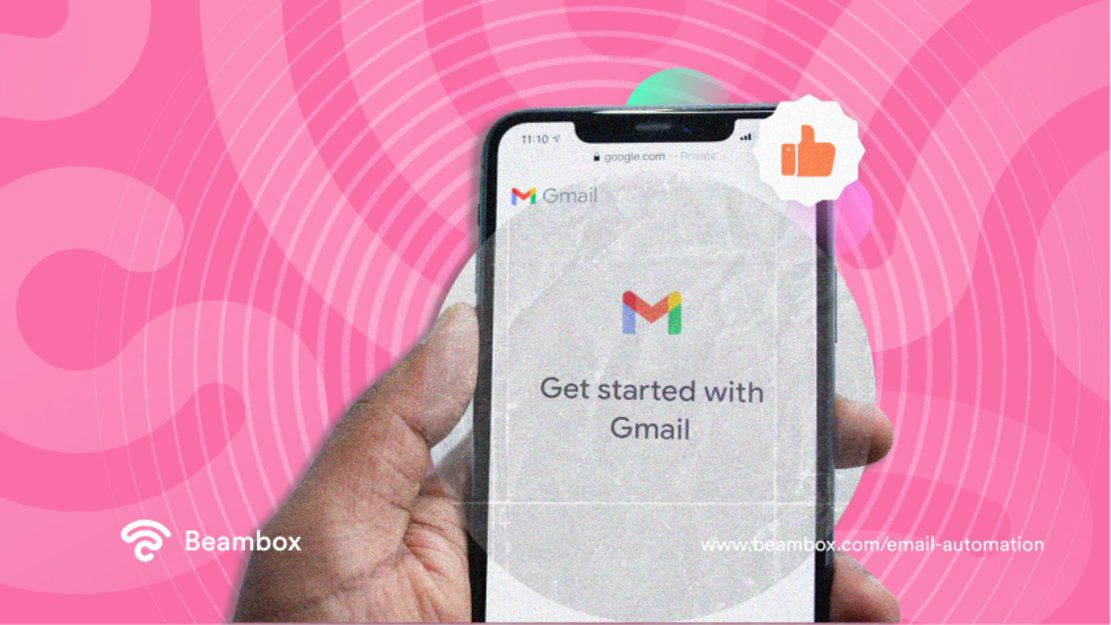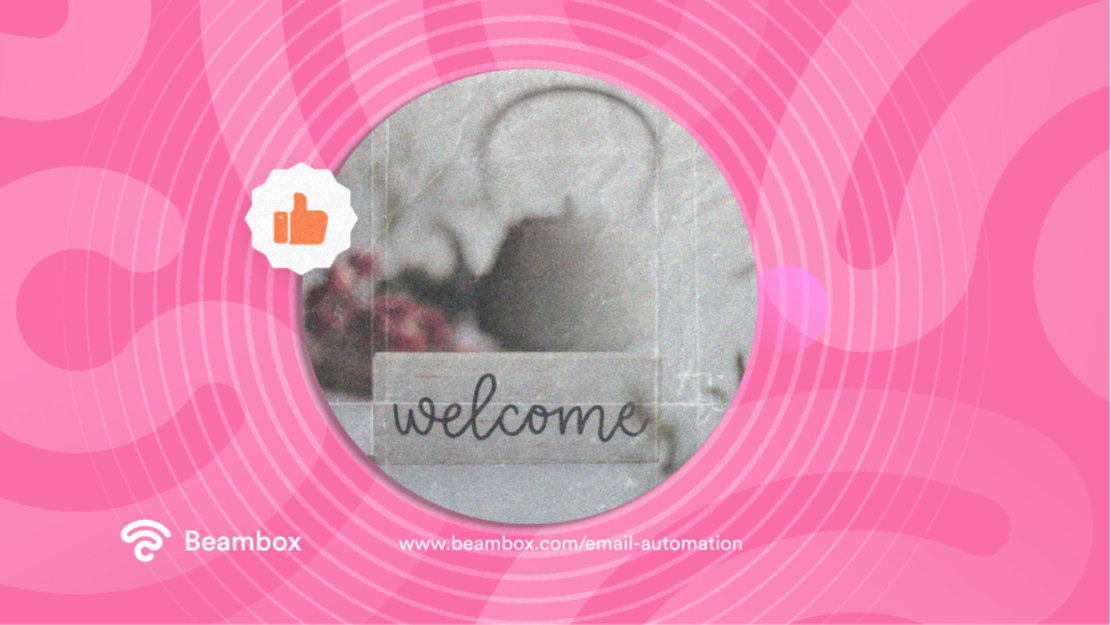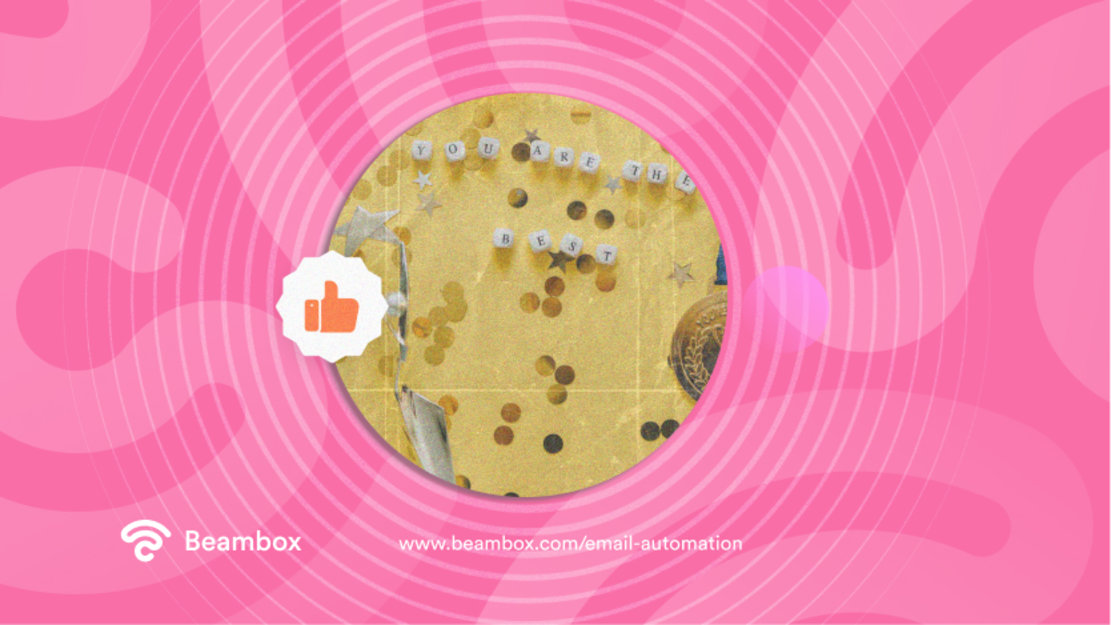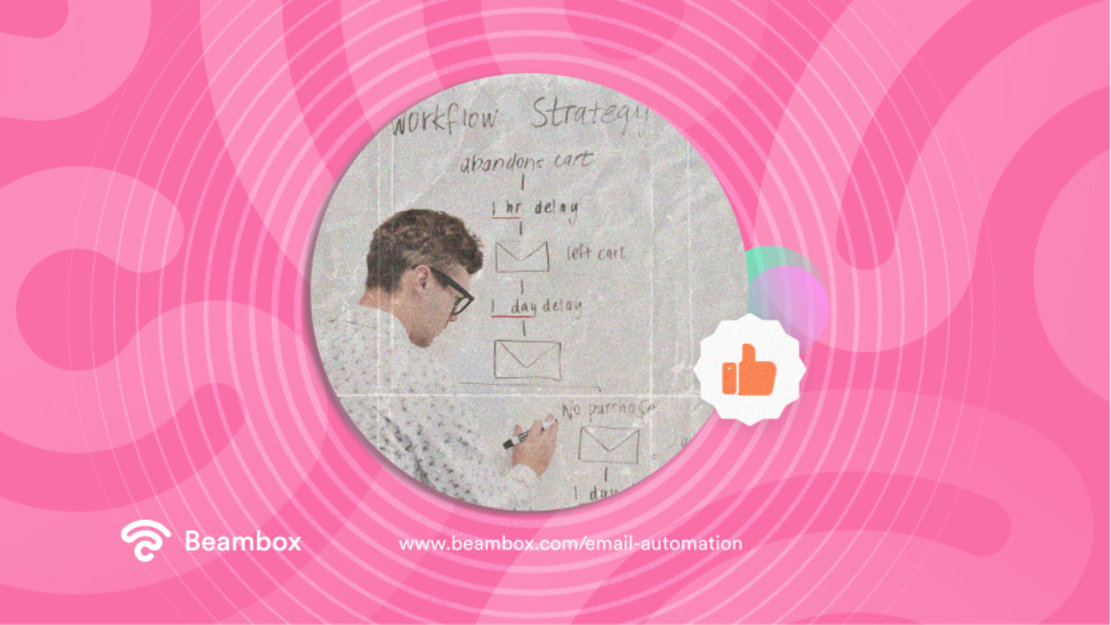Email Automation: Benefits, Tools, Process, and Examples
Many marketers make the mistake of using email automation simply to reduce manual tasks. While it does promote efficiency and takes the burden off your shoulders, it can do much more than that. The real strength of automation mailing lies in triggering emails based on specific subscriber actions or behaviors.
After all, a successful email marketing strategy is all about reaching your customers at the right time. These timely emails encourage people to take immediate action instead of letting the email sit in their inbox.
However, this isn’t possible without the right automation tools and knowledge. Therefore, this article will walk you through everything you need to know. By the end, you’ll be familiar with the definition, benefits, examples, features, steps, and tools of auto email.

What Is Email Automation?
Email automation is sending emails based on pre-defined triggers or schedules. This eliminates repetitive tasks in email marketing, allowing you to focus on what really matters.
However, that’s not enough to answer the question, “What is email automation?” If you’re an email marketing beginner, let’s look at the three main elements that go into automatic emails.
- Triggers: These are specific actions or events that initiate automation. They usually include steps or actions a customer takes or doesn’t take. For example, sending abandoned cart emails when a customer doesn’t checkout after adding products to the cart.
- Workflows: An email workflow is a pre-defined sequence of emails you send based on a trigger. A welcome email series for new subscribers would be the perfect example here.
- Personalization: Just because you’re automating your email messages doesn’t mean you have to sacrifice personalization. A good email marketing tool will let you personalize emails with subscriber names, purchase history, browsing behavior, etc. As a result, your emails will immediately become more meaningful to the receiver.
Benefits of Email Marketing Automation
Now that you know the definition, the next step is to learn the benefits of email marketing automation.
Whenever people hear the word “automatic,” they associate it with faster workflows and increased efficiency. In the case of automation with email campaigns, both of these are true. 49% of marketers and sales teams think saving time on recurring tasks is the best advantage of automation.
Besides, doing everything manually increases the risk of errors. The last thing you need is a frustrated customer who gets irrelevant emails.
Email marketing automation tools also allow you to segment your customers efficiently. The more specific your segments are, the better results you’ll enjoy, such as increased engagement and conversion rates.
Moreover, automated emails allow you to delight your target audience with the right messages at the right time. For example, you can offer special discounts on your customers’ birthdays or holidays. As a result, you’ll enhance customer experience, directly benefiting your sales.
However, this won’t work without keeping your customers engaged so that they share valuable information with you.
On the same line of thought, engaged customers are likelier to become loyal. When emails match customer actions, they feel valued. That’s enough to retain them for a long time, gradually making them brand ambassadors for you.
Lastly, email marketing automation is a way to nurture customer relationships by always being on top of their minds.

3 Email Automation Examples To Guide Your Approach
Creating an automated email marketing workflow isn’t necessarily straightforward. You need to research, explore customer journeys, and create a series of emails in addition to producing the actual email.
Having the correct knowledge about tools and processes is a step in the right direction. However, looking at some examples will further guide your approach.
Now, there are various types of emails that you can send as part of your marketing funnel. Out of these types, there are some emails marketers consider absolutely necessary. Not focusing on these might mean starting on the wrong foot. The following sections will explore the three best email automation examples that are standard practice.
1. Welcome Emails
Welcome emails are, without a doubt, the first email message you should send to your customers. You have to be on their minds from the moment they start interacting with you.
So, set a trigger to welcome a potential customer as soon as they subscribe to your email list. Make them feel like a part of your brand by using their first name and differentiating data.
For example, if it’s a new account registration, words like “Welcome on board, [customer name]” would work great. You can also tell the customers what they can expect from this registration. If you sell products, you can give a first-time purchase discount in the welcome email.
2. Winback Emails
Did you know loyal customers bring in 67% more revenue than new customersloyal customers bring in 67% more revenue than new customers? This is why you can’t ignore customer retention.
Besides, you make various efforts, such as timely service and personalized communication, to keep your customers happy. Why not extend those efforts to your automated email marketing strategy?
You can set triggers for sending winback emails when a customer has been inactive for a long time. This example works best for subscription-based businesses.
For example, if you sell software tools and a customer doesn’t renew their subscription, send them a reminder. Focus on the value your tools provide or ask the customers why they stopped subscribing.
You can even add a small discount for customers immediately after they respond to the reminder email.

3. Loyalty and Referral Emails
While the previous example was for inactive customers, loyalty and referral emails are efforts to keep customers from leaving. Getting these emails right can even take away the need to send winback emails in the first place.
All new or old marketers know what an email loyalty program can do for a business. Basically, they provide gifts, discounts, and other incentives to the most dedicated customers. Loyalty and referral emails allow you to promote these programs and communicate the perks to your customers.
Therefore, triggers for these emails should be set based on milestone purchases, repeat purchases, inactivity, and product reviews.
For example, if a customer has completed ten purchases in their lifetime, send them an automated loyalty email. Show your appreciation and inform the customer about the rewards they have locked.
Moreover, give them the exact steps they need to take to redeem the rewards. Similarly, if a customer refers your business to someone else, send them a referral email. Again, follow the guidelines for a loyalty email, and you’re good to go.
Features To Look for in Any Email Automation Software
There’s no concept of automation without powerful tools, which, by now, you must know are necessary to this process. But there’s no shortage of email automation platforms in the market. So, which one should you choose?
To answer this question, you must study the features of these tools. Apart from the obvious email automation feature, you need a few other things:
- Mailing list management: Having a massive list of names and contact information to fill your email list isn’t enough. You must also have the resources to manage these lists properly. You might have difficulty launching your automated email campaigns if you have outdated contacts or a disorganized list. Therefore, this is the first feature all email automation software solutions must have.
- Customizable email templates: It’s time-consuming to design and write different emails for each scenario, like following up, onboarding, etc. Customizable templates allow you to create emails that reflect your brand identity while incorporating personalization and promoting efficiency.
- Compliance with email laws: Sending mass emails to your customer base is a sensitive business. Simply customizing them to include personalized elements isn’t enough. You must follow all the non-spam guidelines, or your efforts go to waste. A good automation tool lets you comply with these laws through features like a spam checker, unsubscribe options, etc.
- High sending limits: Email automation tools often limit the number of emails you can send. That’s understandable since you wouldn’t want to trigger spam filters or sabotage your reputation. That happens when you send too many emails too quickly. However, the limit must be high to reach a large audience while scaling your business.

How To Automate Emails: 4 Fundamental Steps To Follow
You learned the benefits of email automation earlier in this article. Now, you’re ready to reap those benefits by learning how to automate emails.
However, this process is more challenging in practice. For one, it might seem complex from the outlook, especially if you’re a beginner. But by breaking it down into manageable steps, you’ll be sending powerful automated emails in no time.
Therefore, the following sections will discuss four fundamental steps for automating an email marketing campaignmarketing campaign. So, let’s dive right in.
1. Start With an Email Database
The first step for creating an automated email marketing strategy is to create an email database.
But remember, an email database is not the same as a mailing list. Where a list only has email addresses and names at most, a database is more extensive. In addition to names and emails, you can store other helpful information like purchase history, behavior, etc.
But how do you build this rich email database? Simply start by offering value in exchange for email addresses. This could be a downloadable guide, exclusive discount codes, early access to new products, or even just valuable industry content. You incentivize customers to join your list and share their information by providing something they find useful.
On the other hand, you can place well-designed sign-up forms on landing pages, blog posts, checkout areas, etc. Or use exit-intent popups, website footer sign-ups, PPC ads, events, lead magnets, guest WiFi authentication, and social media integrations.
Once customers subscribe, the possibilities become endless. You can send feedback requests through emails asking them to share their experiences. You can also use website tracking and other analytics tools to gain insight into their behavior and other valuable data. Next, gather this data into a database and keep updating it regularly.

2. Choose One From the Various Email Marketing Automation Platforms
In the next step, choose one from the various email marketing automation platforms. However, you must play smart and consider the features you learned earlier in this article.
But even with this information, the number of tools available in the market is enough to overwhelm you. So, here are two recommendations to help with your research.
Firstly, this list will be incomplete without the mention of Mailchimp. It’s an industry leader that lets you automate emails in multiple categories, such as subscriber activity, data-based, etc.
Moreover, it has multiple email and workflow templates for you to play around with. But if you want highly personalized emails, it also allows you to create custom workflows. It even comes with a free plan, which is worth exploring if you’re a beginner.
On the other hand, Campaign Monitor is a good option if you’re not too keen on interfaces. That’s because it’s a bit outdated. But even then, it has all the elements you need to create a successful automated email workflow. All you have to do is answer basic questions about your target audience, industry, etc.
3. Set the Goals and Scenarios for Your Email Automation Process
Just because you’re automating emails doesn’t mean you have to stick to general messages. Automation is about creating dynamic experiences that adapt to user behavior. So, once you’ve chosen the platform, set goals and scenarios for your email automation process. Here’s how.
Start by determining the goal of a particular email campaign. This step will help you craft email workflows that gradually move toward that goal.
But before crafting the emails, remember to segment your list based on demographics, history, etc. After all, you wouldn’t want the tool to send the same email to everyone.
After segmentation, craft multiple scenarios for each goal. Let’s say you want to increase engagement with your content. Send the initial email with a downloadable guide. The following emails will depend on how the user reacts to this initial email. In this case, the scenarios can be as follows:
- Scenario A: If the person opens the email and downloads the guide, send them additional content or offer consultation.
- Scenario B: If the person opens the email but doesn’t download the guide, follow up by re-emphasizing the benefits. Alternatively, you can offer a different format, like video or audio, or showcase positive reviews to encourage the action.
4. Create and Iterate Your Automated Email System
The last step is to create and iterate your automated email system. You already know what you need to do in different scenarios to reach a particular goal. But how do you move forward once you’ve achieved that goal?
For this, map out workflows that connect one campaign to the other in the greater scheme of things. Let’s say you’ve increased engagement with your content, but your sales haven’t increased. That’s what iterating the system will do.
Determine the number of emails, content, and the ideal time frame between each email for the scenarios you defined earlier. Then, set the automation following the steps of your chosen email platform.
However, your work doesn’t end here because you have to test and improve your workflows. Therefore, continuously track the results and make the appropriate changes. Use review behavior and reviews to drive these improvements and update your workflows.

Beyond Email Automation Tools: Give a Human Touch to Your Messages
You must know what email automation is and how to do it. But failing to add a human touch would be a grave email marketing mistake. While these tools handle the sending, it’s up to you to craft compelling content and personalize the message. Without these things, you’d be wasting the potential of email marketing.
Therefore, make your content engaging, informative, and relevant to your content. Consider adding storytelling, humor, or highlighting a benefit that customers care about.
Moreover, use customer data to address contacts by name, reference past interactions, or tailor offers based on their interests. However, don’t limit yourself to personalizing the content. Leverage the data to create interesting subject lines encouraging customers to act.
You must also understand your customers’ needs to craft messages that resonate with them. So, use social media, surveys, or loyalty programs to gain valuable insights into behaviors and needs.
The Secret To Creating the Best Automated Email Campaigns for Your Business
Email automation can boost efficiency, increase engagement, improve conversions, and enhance customer relationships. However, leaving everything to the technology isn’t the correct approach. The best automated email campaigns are the ones that reach their goals. This can be anything from customer loyalty to increased sales.
To make these a reality, you can leverage the WiFi you offer customers. Beambox is a WiFi marketing platform that can automate the building and sending of a database and campaigns. Plus, you can gather data from customers to optimize your marketing campaigns. Try Beambox for free for 30 daysTry Beambox for free for 30 days!
Get Started With Free WiFi Marketing
Beambox helps businesses like yours grow with data capture, marketing automation and reputation management.
Sign up for 30 days free


